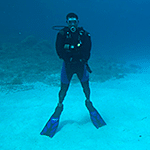 The other day, I got an interesting comment on a photo I posted way back in December. The photo (shown below) is a still-frame capture from a You Tube video. The video was actually pretty good, showing both diving and a specific destination in a positive light. Unfortunately, that’s not what many viewers are going to remember.
The other day, I got an interesting comment on a photo I posted way back in December. The photo (shown below) is a still-frame capture from a You Tube video. The video was actually pretty good, showing both diving and a specific destination in a positive light. Unfortunately, that’s not what many viewers are going to remember.
Toward the end of the video, there are a few seconds of a diver standing upright in the sand, apparently fiddling with a camera. This is odd, in that most of the divers in the video are generally demonstrating good buoyancy control and trim.

What is even more troubling is that, even though this video was not produced by PADI, they apparently sponsored it, as evidenced by the ending credits.
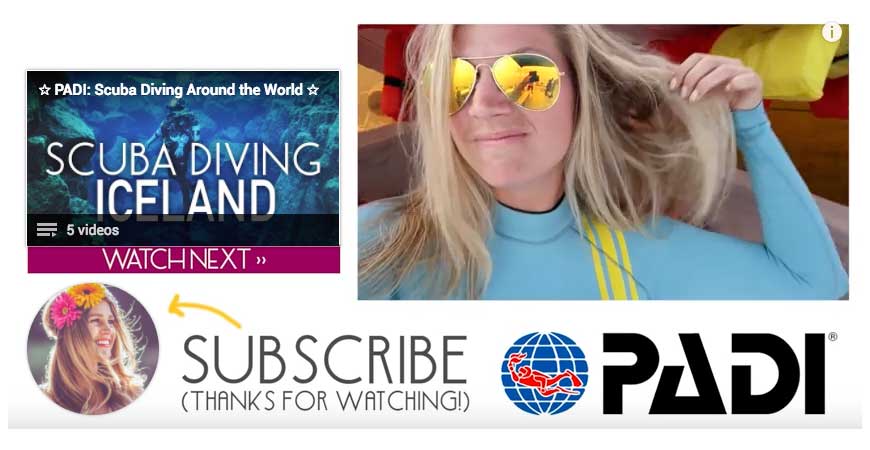
One of the problems with being the sole sponsor of someone else’s video production is that people will hold you accountable for its content, regardless of whether you had any real control over it. Given that this ship has already sailed, we can only hope PADI went to the producer afterward and said, “Let’s not show any more shit like this…okay?”
High Crimes and Misdemeanors
So, about that comment I mentioned earlier: Apparently one reader took issue with the fact I was condemning the diver being planted firmly on the bottom, because it was sand and not coral. He wrote:
Looks to me like the diver is standing on sand, not on the reef. So when did this become a high crime? I can see what gear it is he has but it might be a camera, so perhaps he is working on camera settings and moved away from the reef to do so. Did the diver cause any damage to the sand? I certainly get the anti silting techniques that are required in a cave or wreck penetration environment, but I fail to see why this is such a travesty.
Now, if you want to split hairs, you could dismiss this comment as a classic straw-man argument. The commenter is trying to make this about whether or not standing in the sand is a “high crime,” when the real issue is whether it is something to which a training agency should attach its name. However, the fact remains that what he is asking is actually a pretty good question.
Most new divers learn that, while standing, sitting or kneeling on coral is a Very Bad Thing, doing it on the sand is perfectly okay. After all, how many photos have you seen on Facebook or Instagram showing scuba classes doing this:
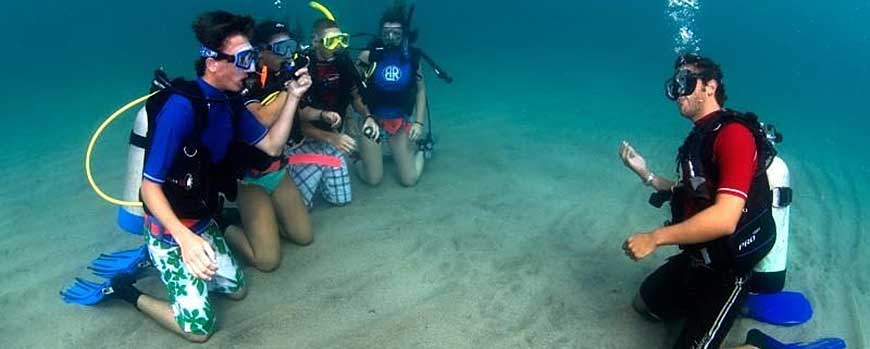
Even PADI itself released a marketing kit for dive stores back in 2006 that included photos of divers standing on the bottom.
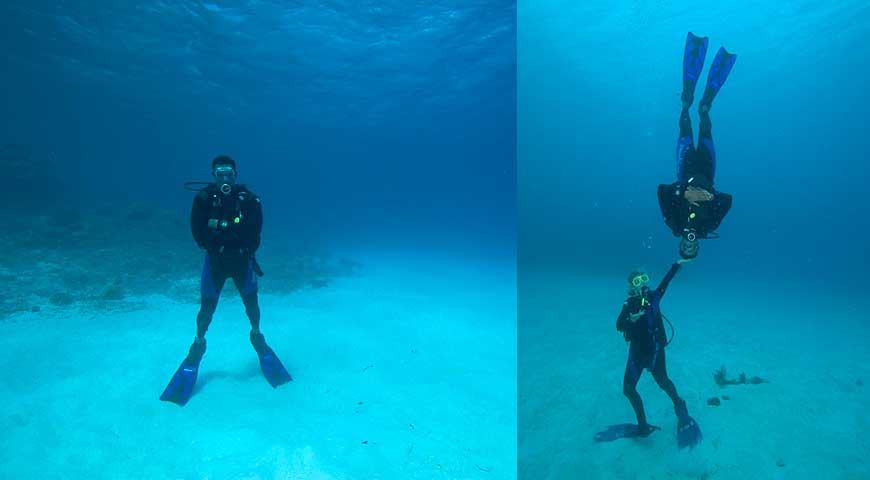
So what’s the big deal? Isn’t sand just…sand? I mean, it’s not as though you are hurting anything by being in contact with it. Or are you?
Sand isn’t always “just sand”
Sometimes sand is just that: Sand. You can stand, sit, kneel or build a house on it and you won’t be hurting anything. But that’s not always the case.
Sometimes the “sand” can be home to nearly as many creatures as nearby coral reefs. Creatures that do not take kindly to you plopping yourself down right on top of them.
Case in point: Blue Heron Bridge is a popular diving and training site in Palm Beach County, Florida. At first glance, most divers would dismiss the bottom as being “just sand.” However, when you get closer, you discover that “the sand” is actually alive with sensitive and fragile aquatic life.
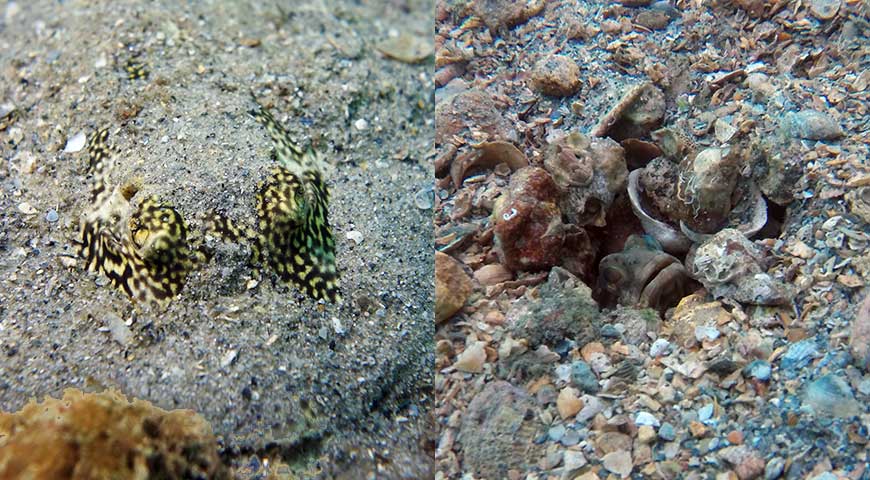
The fact is, you can’t simply assume that just because the bottom “looks like sand,” it is any less fragile than the adjacent coral reefs. Divers are almost always better off adhering to the axiom that, when your head is under water, your knees, feet and butt should never be in contact with the bottom.
But wait! There’s more…
As I said earlier, the issue here is not whether it’s okay to be in contact with the bottom, regardless of circumstances. The real issue is what should training agencies, dive magazines and other authorities on diving be depicting as acceptable behavior. Let’s look at the photo one more time:

Here’s what I see when I look at it:
- To start, the diver is planted like a rock on the bottom which, as you already read, may or may not contain fragile aquatic life.
- The diver’s buoyancy is clearly not under control, nor is his body position remotely close to the near-horizontal trim that, with few exceptions, divers should strive to maintain at all times.
- If this diver truly is fiddling with a camera, that’s an even bigger problem. As most dive boat captains and divemasters will tell you, would-be underwater photographers, as a group, cause more damage to fragile underwater life than anyone else. If this diver cannot operate his camera without standing on the bottom, he needs to put the camera away and not take it out again until he has learned to better control his buoyancy.
The rise of social media and content marketing has put more pressure than ever on training agencies and others within the dive industry to produce as much content as possible, as quickly as possible. Increasingly, the job of generating this content falls on people who are not experienced divers and, in many instances, don’t even dive. As a consequence, they often don’t know what behavior is acceptable and what isn’t. Unfortunately, when new divers see things like this, they understandably assume that, if their training agency shows it, it must be okay to do.
It therefore falls to the rest of us to help keep those in authority honest. When a training agency, dive magazine, dive resort or manufacturer posts unacceptable behavior on Facebook, Instagram or You Tube, call it to their attention. If you don’t, they won’t learn. In fact, you will actually be doing them a favor (just be nice).
By the way, this applies to my clients as well as their competitors. Believe it or not, by taking them to task, you will actually be helping me do my job.
